#native and non native plant
Explore tagged Tumblr posts
Text

A retreat created to invite you to the motherland for deep healing with yoga, meditation, breath work, alkaline nutrition and more with experienced African spiritual facilitators.
#african yoga retreat#African retreat#yoga retreat#best yoga retreats#healing retreat#mindfulness retreat#native and non native plant#reclaiming natural state#Exploring beautiful Tanzania#Invite to African culture#Tanzanian products
0 notes
Text
How Non-Native Plants Are Contributing to a Global Insect Decline
The impact of introduced plants on native biodiversity has emerged as a hot-button issue in ecology. But recent research provides new evidence that the displacement of native plant communities is a key cause of a collapse in insect populations and is affecting birds as well...
#non-native plants#invasive species#environment#conservation#insect decline#insect#insects#entomology#biodiversity#animals#nature#botany#plants#non-native invasive species
1K notes
·
View notes
Text
listen i love and grow and appreciate native plants as much as any plant ecology nerd but good god the energy of a lot of native plant discussion on social media continues to be so............ much
#like got a comment a few weeks ago on work facebook on baptisia saying 'and it's native to this country!!'#which is so... idk the energy of that is off#people comparing the nectar of non-native flowers to candy with no nutrition#people bashing no mow may because it's not doing enough and lawns are invasive#assigning moral worth to plants#etc etc#that garlic mustard's not evil karen it's a plant
1K notes
·
View notes
Text
Help me decide?
I'm having a botanical/art crisis. This may be my last year ever in CA as we are likely getting PCSed(Permanent Change of Station) soon. To honor the state where I spent most of my life, I want to do a series of southern California plant illustrations. I'm torn however. I originally wanted to do native CA plants, but after photographing, cataloguing, and researching many of the plants I had selected during my time hiking around socal, I've found many of them are not actually native. This begs the question. Should I do justice to the reality of what I've seen and enjoyed during my time living here by including non native plants and still calling them CA plants, or do I offer an idealized version of native CA plants even if it's not what the reality is when you are in the wild.
#botany#art#discussion#send halp#tbh my biggest concern is the botany buffs out there getting upset with me for calling invasive/non native species CA plants
84 notes
·
View notes
Text
The real mystery of the reanimator universe isn’t how Herbert died and came back in 2/3 movies but how they managed to get that iguana through international customs
#something something pre 9/11#maybe this is before we realized letting people import non native animals and plants was a bad idea#herbert: it’s one iguana daniel how much damage could it do to the ecosystem#tsa clerk voice: sir why is your carry on bag squirming#herbert: this is my emotional support lizard#reanimator
64 notes
·
View notes
Text

Working on reclaiming the run from the invasive Japanese honeysuckle that's been taking it over for years. I got a ton pulled down yesterday & have it about halfway cleared now!
A little annoyed that it's gonna rain all weekend so I won't be able to play outside on my days off. :( But hopefully the softer ground will help me tackle the other patch of wintercreeper next week at least.
I have triclopyr to apply to the honeysuckle and wintercreeper stumps when I get down to them but I'm putting it off until I have it cleared out & can apply to them all at once.
Probably won't be able to plant anything new until next year, but need to look into safe climbing plants that could go on the run bc I DO love the look & the cats love hiding in it. I'd just like it to be something not invasive, lol
#fbw rambles#fbw plants#our poor yard is like entirely invasives#some more annoying than others#attacking the worst ones first#also need to work on pulling the cleavers#a seed mix we tried after the plumbing work turned out to be entirely non native and invasive species#so that's fun#now we gotta undo that and try to fix it#if any non native plants get to stay they have to at least be good for Ed to eat lmao#which means the dandelions and clover and plantain and dead nettle all get to stay
19 notes
·
View notes
Text
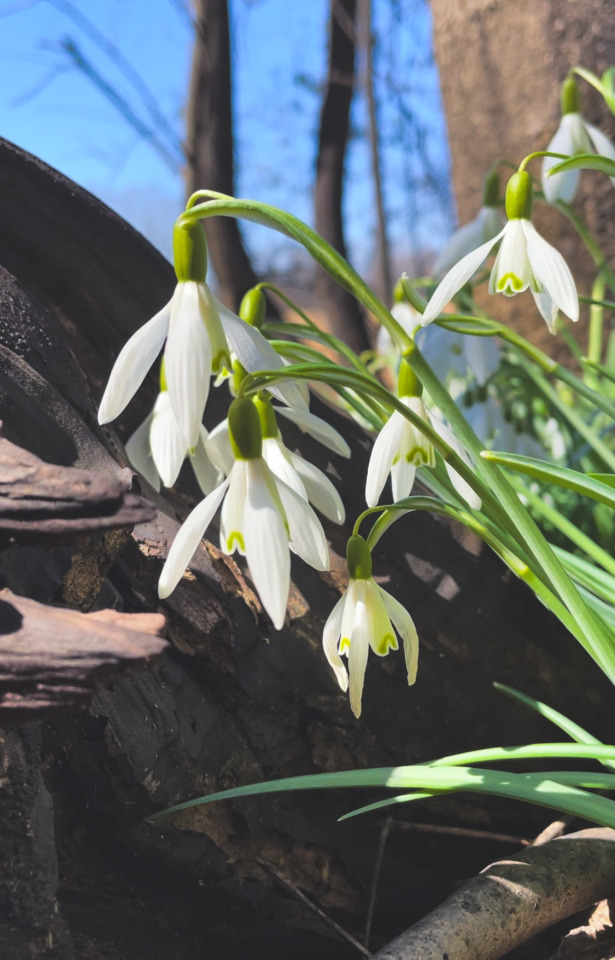

Def not thrilled to see them this early, but was still heartened because… spring comin’.
31 notes
·
View notes
Text
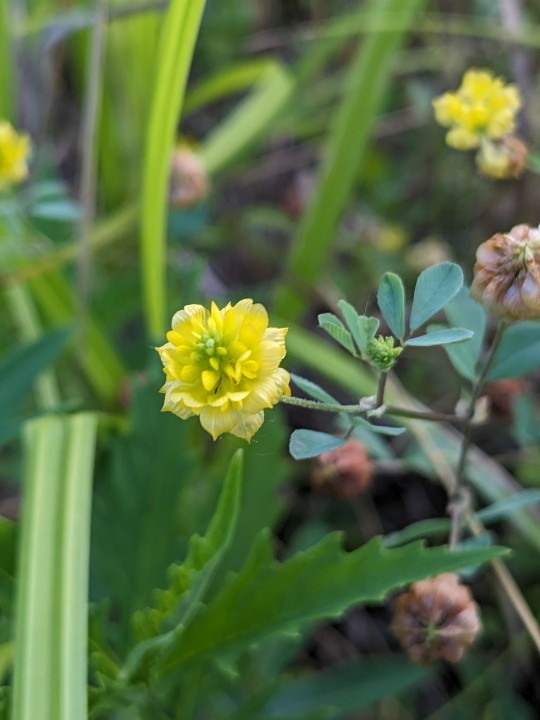
Hop Trefoil Clover
Trifolium campestre
This species of trifolium is not native to the United States, its native range is in Europe and Western Asia, but it has now been introduced in some areas of the US due to being grown for fodder and escaping. However, it's not yet listed as an invasive species here.
June 17th, 2023
Weldon Spring, St. Charles County, Missouri, USA
Olivia R. Myers
@oliviarosaline
#botany#Trifolium campestre#trifolium#clovers#shamrocks#legumes#fabaceae#flowers#plants#Missouri#Hiking Missouri#Nature#fields#woods#outdoors#hiking#exploring#yellow#yellow flowers#Missouri nature#naturecore#fairycore#cottagecore#invasive plants#non native species#beauty of nature#flower photography#plant photography#nature photography#photography
35 notes
·
View notes
Text
The Secret Other Thing: KILL
This is my eighth post in a series I’ll be making on how to increase biodiversity on a budget! I’m not an expert--just an enthusiast--but I hope something you find here helps!
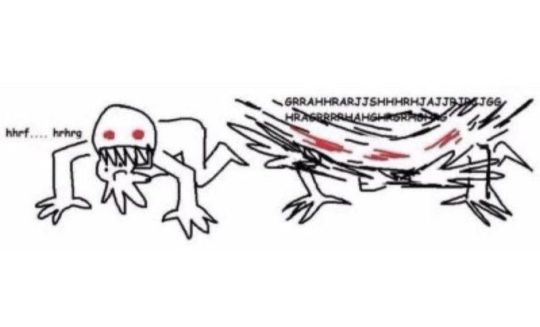
KILL, TEAR, RIP, MAIM.
You may have seen this sentiment a few times on gardening and wildlife blogs and been incredibly confused. Isn’t killing things the opposite of what you should be doing to protect habitats? In some cases, it really is necessary!
Invasive Plants
Invasive plants can do more harm than good, taking up space and nutrients and providing little in return to local wildlife--while spreading and choking out the native plants that would provide the most to our native fauna. Learn how to identify invasive species in your area and how to properly dispose of them, and do so whenever you have the opportunity! You may even be able to find volunteer groups/events where you can join up with like-minded people to remove a specific plant from an area.

(This image refers to the United States specifically--these plants aren't invasive or native everywhere!)
Pro tip, though; if you take out an invasive species and leave empty soil where it was, it’s likely another quick-growing invasive species will just move in. We don’t want that! Try to plant something in its place! If you’re going out on a mission to take out invasive plants, try to keep some native flower seeds or seedlings on your person while you do this work.
Different plants are invasive in different places, so be sure that the plant you're targeting is actually invasive to where you are. You don’t want to rip out a beneficial plant because it’s invasive somewhere else! Social media sites like Instagram and Tumblr are great for spreading information about invasive plants, but they can often be a bit… US-centric. Even I'm guilty of this, plenty of times! Plants like garlic mustard, kudzu, butterfly bush, Amur honeysuckle, wild radish, and Japanese knotweed are high-profile invasive plants that I hear about all the time here in America--but they came from somewhere, and are a part of the environment in these places! Likewise, many plants that are branded as pollinator-friendly and biodiversity boosters here in the states can be awful invasive species elsewhere. Even plants and animals that aren’t invasive in one part of a country or continent can be detrimental in another--Canadian waterweed is native to North America, but it’s actually invasive in Alaska.

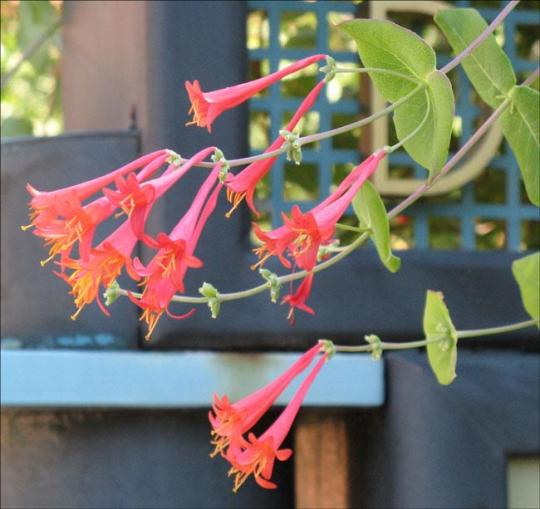

(Japanese honeysuckle (Lonicera japonica) vs Coral honeysuckle (Lonicera sempervirens) vs the yellow variety of Coral honeysuckle (Lonicera sempervirens))
Be sure you’re taking out the right plant--be very confident in your ID before you take any action! Amur honeysuckle and Japanese honeysuckle, for example, may be invasive in the US--but coral and northern bush honeysuckles are native and key species in their environments. You don’t want to do harm while trying to do good--double check your IDs. Being certain with your IDs can also prevent you from doing harm to yourself and others--some plants produce toxic smoke when burned. Stay well-read on how to dispose of the invasive plants you’re targeting.

(Garlic mustard pesto! Can't say I've ever had it, but I've heard good things about it online!)
With that being said! Some invasive species can be eaten. It’s free food! And you’re helping the environment? Win-win! Try looking up recipes that use these plants, or see how you can substitute something else for them! Foraging guides and blogs would likely be extremely helpful for this.
A super easy way to help curb the spread of invasive plants is to not grow them yourself! Double check any plant you’re considering buying or growing from seed--some sold in stores like butterfly bush are often touted as great plants to add to a pollinator garden, but in reality are an invasive species that eagerly displaces native shrubs here in the states.

POV: you're working the garden center at the Blue Big Box Store, you care about the environment, and every day you watch people buy Butterfly Bush and can do jack shit about it asides from try to gently steer them towards something else (but the other next best option was also Invasive Tropical Milkweed because its easier for Big Box Store to sell) I have a personal vendetta against people who grow Butterfly Bush (I live in The States) (If you didn't know Butterfly Bush was invasive in the US before now you're valid but also please god consider replacing it with an alternative ASAP)
Invasive Animals

POV 30 to 50 feral hogs are running into your yard within 3-5 minutes while your small children play
Invasive animals and insects compete for resources, take over habitat, and can even spread disease--all while pushing native species out or dwindling their numbers. Keep track of invasive animals you see and report them. Depending on the severity of the situation, killing them can be necessary and even encouraged. Do be sure it’s an invasive species and not a look-alike. If you’re unsure, take pictures, do research, and take action the next time.
Some high-profile invasive species in the US are spotted lanternflies, cuban tree frogs, hammerhead worms, feral swine, zebra mussels, lionfish, asian carp, burmese python, and others. Again, do make sure you’re targeting species that are invasive in your area; I doubt Asian carp are considered invasive in Asia, for example. Similarly, the American bullfrog is native to the eastern US and Canada, but is quickly becoming an invasive species around the rest of the world. Not to mention, the racoon problem in Japan…
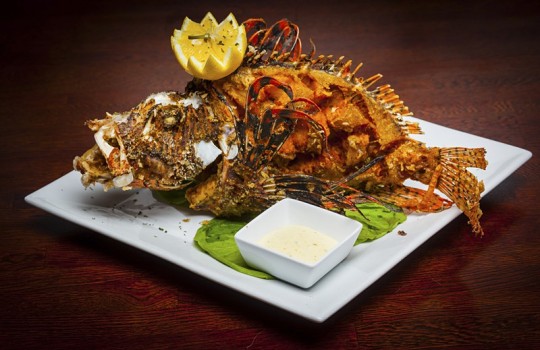
Some invasive species can be eaten as well! Some of them taste awful, and some can even be dangerous to eat or handle without caution. I would do a good amount of research online before trying to cook up just anything.
Doing it Right
If you’re trying to handle invasive species, you do have to ensure you’re doing it properly. As you do your research, you’ll likely see if the species should be photographed and reported and to what channels. Also in some cases, going about destroying them incorrectly could unintentionally help them spread--some plants spread quickly through rhizomes into disturbed soil, and hammerhead worms can actually regenerate from pieces into fully-developed new worms when you try to cut them up. Some invasive species are even actively harmful to humans, so I cannot emphasize enough that you need to be sure about what you’re dealing with and be careful about it. Giant Hogweed, for example, has toxic sap that’ll cause severe skin inflammation and painful blisters if it contacts skin and is exposed to sunlight. The blisters last for months, and the skin may develop long-term sensitivity for sunlight.
If you’re unsure about how to handle an invasive plant, or are unsure of it’s identity, try contacting your local university co-op extension service if you’re in the states. They can tell you how to remove it safely and effectively. I can't say for sure what other channels would be the best option for someone living outside the states, so if anyone knows, feel free to chime in!
Pets
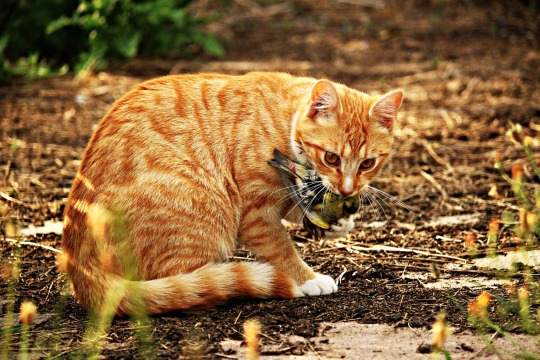
POV: ur little outdoor kitty Firestar is destroying the balance of your local ecosystem plz keep him INSIDE
Please keep your pets inside, or at least on a leash. An outdoor cat can do a lot more damage than one might imagine, as well as unrestrained dogs.
That’s the end of this post! And... technically, the last post in the series! My next and final final post is gonna be basically a giant list of all my sources that I used to make this post! I hope this post series was informative, helpful, interesting--anything of value, really! Feel free to reply with any questions, your success stories, or anything you think I may have forgotten to add in!
#biodiversity#solarpunk#gardening#invasive species#ani rambles#out of queue#the biodiversity saga#i wasn't sure where to add this in on the post but not all non natives are invasive and some native plants have sorta invasive-y habits#i dont remember the proper term that isn't just 'invasive-y' but yknow.#with that being said I tend to do a quick google search to make sure a plant I wanna buy isn't invasive before I add it to my garden#with that being said fuck big box stores STOP SELLING INVASIVE PLANTS I SWEAR TO GOD I DONT CARE IF THEY'RE POPULAR STOP IT STOP IT STOP IT#someday I will go on an entire unhinged rant about tropical milkweed#ive already done it before but I'm willing to do it again fuck it#anyways!!!! this is the last post if you don't wanna read Collection Of Links: The Musical so uh#hope this was a nice series with helpful information!! love yall byeeee
67 notes
·
View notes
Text



Some random Daffodils I found on our property 4/25/25
3 notes
·
View notes
Text
living in western Washington is so insane making some times like why the fuck would you plant a fucking palm in this climate what is your problem
4 notes
·
View notes
Text
Calling the colonization of Palestine by the settler colonial state "Israel" a landback movement is so insulting, because some of the main things that landback is NOT is 1. Kicking everybody else off your land who isn't you , 2. Creating an ethnostate, 3. Killing people specifically for the previous two things, and Israel has done & is doing all those things
& I didn't want to derail that previous post, but Israel self Indigenizing itself to Palestine is step #8 in settler denial of Indigenous colonization

#i do not recognize the colonizer state 'Israel'. there is only Palestine & my cousins the Palestinians#& if Israelis are 'Indigenous' to there then why did they do so much damage to the land and introduce non native#& invasive plant species? why did they kill all the olive trees that were Indigenous to the area?#youd think a peoples with 'Indigenous' ties to that place wouldnt do that.#if this is overstepping let me know
43 notes
·
View notes
Text
It's crazy how many wild plants you can use in tea once you learn to identify stuff.. I always do a thing where I go to a new area and collect a variety of whatever IDed tea plants I can find and make it into an '[area] tea' and it's usually prety good for a random assemblage of various wildflowers
#Bergamot (the wildflower not the citrus) and anise hyssop (again. different thing from the plant that makes the spice) are pretty much#everywhere around here. Along with raspberry/wild roses/plantain (not the fruit)/various native and extremely non native mints etc#Thinking about this right now I'm excited for spring to come. And it kind of IS because this winter has been the warmest el Niño winter#in my PARENTS' living memories but anyway
12 notes
·
View notes
Text

first time fishing during rain and within 30 min I caught one of the rarest fish, hell YEAH!
#m#animal crossing#i also got a villager's photo and planted a bunch of non-native fruits so we're doing wonderfully
5 notes
·
View notes
Text
Apparently there's an easy one stop website for identifying invasive plants in California that might be sold for gardening purposes. Useful. Breaks down by region, since some species are a problem in some areas and not others (and CA does have a bunch of different ecosystems.)
Edit: that's the to-watch list for things that might become a problem in the future, I meant to post this one. Much shorter list and offers alternatives.
#imagine planting non-native irises when douglas irises are right there#I say that but I suspect my apartment building does in fact landscape with those irises. Hmm.#edit again nah checked photos that's something else entirely all good
2 notes
·
View notes
Text
while a/b/o fic 99.9999% of the time just does not appeal to me at all and the tag is a sign to skip a particular fic i Will admit that it feels different when i encounter a/b/o fic in the supernatural ao3 tag compared to encountering it anywhere else. yeah you weird little fandom that’s exactly what you’re supposed to be doing
#am i going to read it though? probably not#it's like. i grew up with non native himalayan blackberries in the backyard right. it's like if i suddenly decided to visit armenia and#saw them and then remembered that oh right. this is where you're from.#actually that's a terrible metaphor because blackberries are delicious and a/b/o isn't anything like an invasive plant#it's like if there was . a decorative flower a bunch of people like and have in their gardens but my hayfever doesn't like it and i think#it's a little bit ugly so i don't have any in my garden#and then i go to a place famous for having this flower all over town and it's like well i still don't LIKE you much but i should have#expected this probably and if you're gonna be anywhere it might as well be here#none of this makes any sense. forget the plant metaphors. i may be a little loopy#natural soup
2 notes
·
View notes